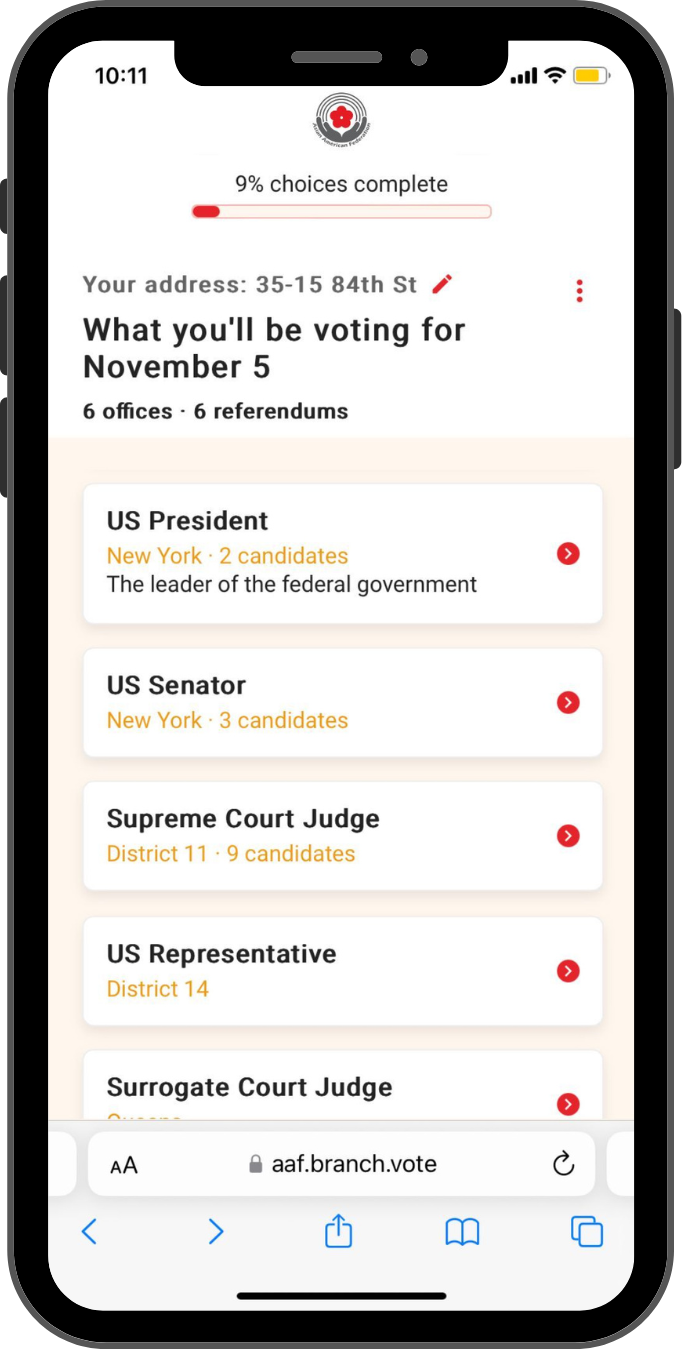AAF Analysis Shows Asian New Yorkers Are Being Undercounted in the 2020 Census
Lower Participation puts Political Representation, Funding for Education, Health, and Essential Services at risk
For Immediate Release
May 21, 2020
Contact:
Meera Venugopal 212-344-5878, x224
Meera.Venugopal@aafederation.org
New York, NY: The Asian American Federation (AAF)’s analysis has found that as of May 6, 2020, Asian-majority census tracts in New York City had an average response rate of 44.7% compared with a citywide self-response rate of 46.1%.
AAF’s analysis of the largest Asian ethnic groups showed significant differences in participation. Census tracts with 20% of more Chinese residents had self-response rates slightly below that of the citywide average. Census tracts with concentrations of 20% or more of Korean or Pakistani residents had higher average self-response rates than the citywide average. Census tracts with 20% or more Filipino, Bangladeshi, or Indian residents were much lower than the citywide average. The analysis shows that the Filipino community had some of the highest growth in self-response rates while the Bangladeshi and Indian/Indo-Caribbean communities had some of the lowest changes (see table below).
US Census Bureau reports released last year indicated that Asian Americans were the least likely to participate in the Census as a result of several factors including the failed attempt to add the citizenship question, concerns about privacy, and lower English proficiency rates, and the current participation rates seem to bear out the predictions. The COVID pandemic that has disproportionately affected some neighborhoods with large Asian populations, has further complicated outreach and participation efforts.
AAF released the analysis at a virtual community forum titled Self-Response Rates in Asian Neighborhoods, and this report represents the first of weekly updates to self-response data. If you would like to sign up for our weekly Asian response rates report, please e-mail census@aafederation.org.
Neighborhoods of concern:
Our analysis was also able to look at the response rates for neighborhoods with large concentrations of Asians. The following neighborhoods in New York city have Census response rates that are creating cause for concern. These neighborhoods are:
- Richmond Hill and South Ozone Park in Queens with growing Indian and Indo-Caribbean populations had some of the lowest self-response rates in the city.
- Flushing in Queens particularly in some census tracts with more than 40% Chinese populations had low increases in self-response rates.
- Chinatown in Manhattan particularly in the NYCHA housing developments of Rutgers and Smith House.
- Bensonhurst, Dyker Heights, and Sunset Park in Brooklyn where tracts with large portions of Chinese residents had low self-response rates.
Community leaders and groups who participated in the AAF Community Forum agreed that they would require to intensify the collaborative outreach efforts of community groups, civic religious leaders, elected officials and most importantly, residents, to increase participation in these neighborhoods.
“When we noticed that the CUNY Center for Urban Research showed that Asians in the largest US cities were lagging in their self-response rates, we wanted to see what was happening to our communities in New York City,” said Howard Shih, AAF’s Director of Research and Policy. “While we have been able to identify the neighborhoods where more outreach is needed, we still face the hard work of addressing the barriers to participation, including internet access, social isolation, and language access.”
“The Asian American Federation’s analysis of census response rates shows that our communities can’t afford to wait and be overlooked again, when so many resources and political representation are at stake,” said Chuck Park, Civic Participation Manager at the MinKwon Center. “Armed with the Federation’s maps and data, activists, organizers, and civic leaders will be able to take action to target outreach in the most undercounted, immigrant-dense neighborhoods of New York City.”
“During this period of virtual outreach, data plays a key role in shaping citywide outreach efforts in order to get the most hard to count communities to fill out the census and secure their fair share in resources. As we continue to see areas like Richmond Hill and South Ozone Park struggle with response rates, disaggregated data is key in helping us to engage the most hard to reach community members in ways that are most impactful, such as identifying geographic areas and community groups with the lowest response rates, ” said Farzana Linda, Advocacy and Organizing Program Manager at Chhaya CDC.
Census 2020 Asian Response Rates By Major Ethnicity
| Ethnicity | Self-Response Rate | Change in Self-Response Rate from: | |
| Time Period: | 5/6/2020 | 4/28-5/5/2020 | 4/21-4/28/2020 |
| Korean | 50.7% | 3.2% | 3.2% |
| Pakistani | 48.9% | 3.2% | 3.5% |
| Chinese | 45.5% | 3.0% | 3.1% |
| Filipino | 43.4% | 3.1% | 3.8% |
| Bangladeshi | 39.2% | 1.9% | 2.2% |
| Indian | 38.8% | 2.4% | 2.6% |
A webinar presentation with additional findings covering the Bronx, Brooklyn, Manhattan, Queens, and Hudson and Middlesex counties in New Jersey is available at: https://youtu.be/17LTO0vVh0I
The slideshow for the presentation is available at: www.aafederation.org/pdf/AAF_SR-5.29.2020.pdf
————————————————-xxxxx———————————————————-
